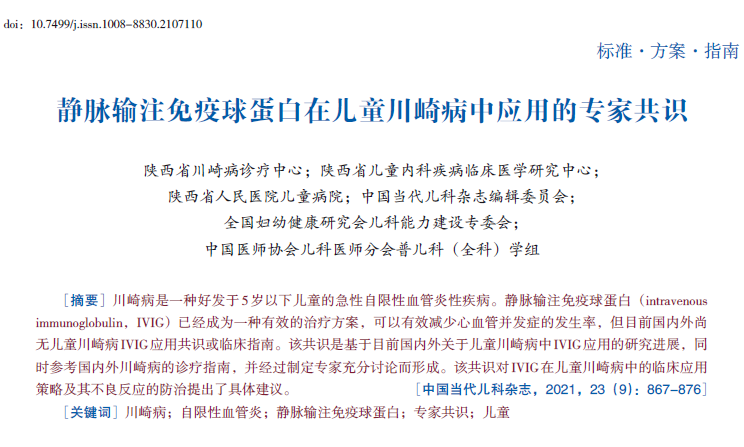 PDF(678 KB)
PDF(678 KB)


Expert consensus on the use of intravenous immunoglobulin in children with Kawasaki disease
Shaanxi Provincial Diagnosis and Treatment Center of Kawasaki Disease
Chinese Journal of Contemporary Pediatrics ›› 2021, Vol. 23 ›› Issue (9) : 867-876.
 PDF(678 KB)
PDF(678 KB)
 PDF(678 KB)
PDF(678 KB)
Expert consensus on the use of intravenous immunoglobulin in children with Kawasaki disease

Kawasaki disease / Self-limited vasculitis / Intravenous immunoglobulin / Expert consensus / Child